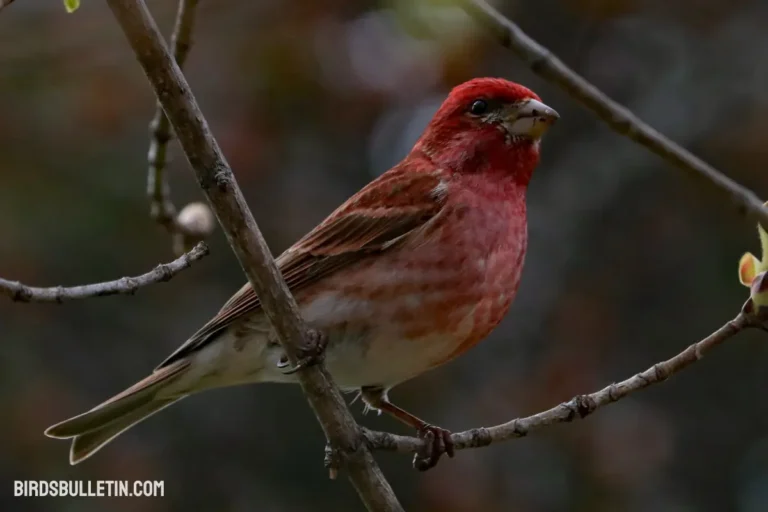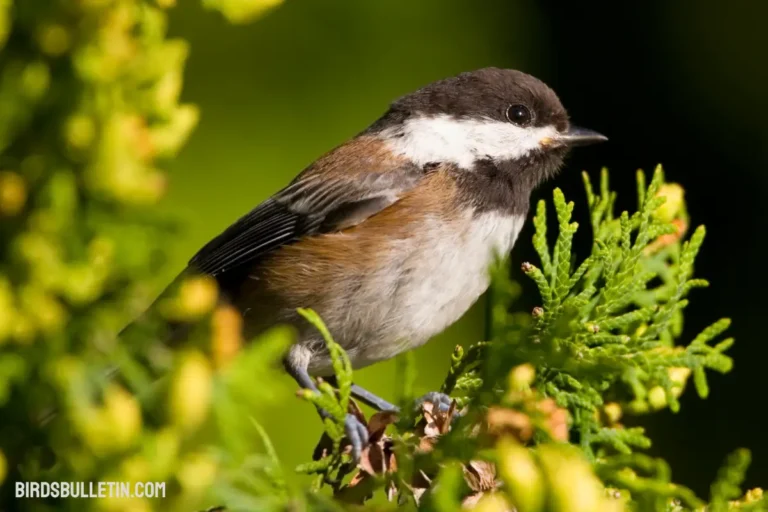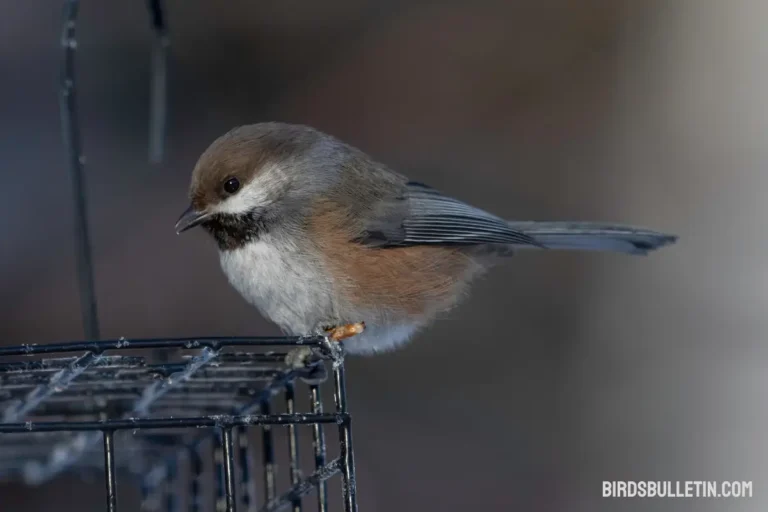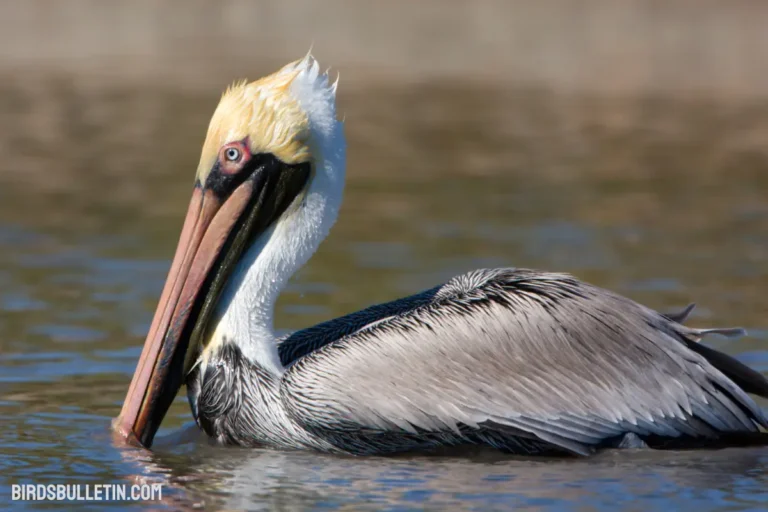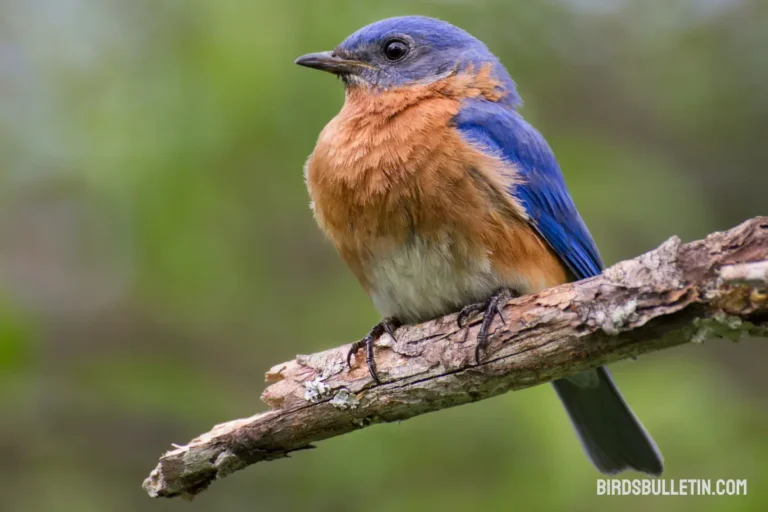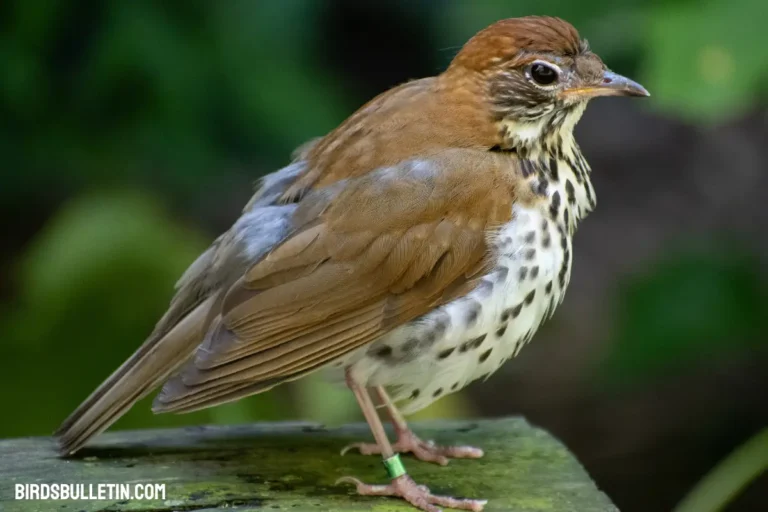The Peregrine Falcon: Swift Aerial Hunters
The peregrine falcon (Falco peregrinus) stands as one of the world’s most widespread raptors, earning its name from the Latin term for “wanderer” thanks to an expansive global range.
Renowned for record-setting aerial speeds diving on avian prey, these powerful falcons demonstrate remarkable athleticism and grace.
Interested in similar topics on birds overview:
Identification Step-by-Step
Identifying a Peregrine Falcon involves paying attention to various physical characteristics and behaviors. Here’s a step-by-step guide to help you identify a Peregrine Falcon:
01. Size and Shape:
- Peregrine Falcons are medium to large birds of prey with a wingspan ranging from 70 to 120 cm.
- They have a peculiar falcon shape with pointed wings and a relatively short tail.
02. Coloration:
- Adult Peregrine Falcons exhibit a dark blue-gray to slate-gray back and wings.
- The undersides are pale, with a white to cream-colored chest and belly, often streaked with fine, dark markings.
- The head has a distinctive black “hood” or cap that extends down to the eyes.
03. Facial Features:
- The facial pattern is characterized by a dark “moustache” mark or stripe below the eyes, contrasting with the lighter color of the face.
- Peregrines have a sharp, hooked beak that is dark in color.
04. Flight Pattern:
- Peregrine Falcons are known for their swift and agile flight. They often engage in powerful, rapid wing beats followed by glides.
- During hunting, they may exhibit high-speed stoops or dives, reaching incredible speeds as they pursue prey.
05. Eye Color:
- The eyes of adult Peregrine Falcons are typically dark, ranging from brown to black.
06. Juvenile Plumage:
- Juvenile Peregrine Falcons have distinct markings, with a brownish back and wings. The chest is streaked with vertical bars.
- The facial markings are less pronounced in juveniles compared to adults.
07. Leg Bands (if visible):
- Some Peregrine Falcons may have leg bands placed by researchers for identification. If visible, these bands can provide additional information about the bird’s origin and history.
Females run noticeably larger than males. Immatures feature brown upperparts before molting lighter as adults.
Peregrine Falcon Profile
| Characteristic | Details |
|---|---|
| Scientific Name | Falco peregrinus |
| Alternative Name | Duck Hawk |
| Color | Blue-gray to slate-gray back, white to cream underside with dark markings; black “hood” on head |
| Size | 13 to 23 inches (34 to 58 cm) in length |
| Wingspan | 29 to 47 inches (74 to 120 cm) |
| Weight | 3.3 to 1.5 (330 to 1500 grams), Female is larger than male |
| Lifespan | On average 10 years, Longevity is 17 years old |
| Breeding Season | Late March to May |
| Lay Eggs | Clutches of 3 to 4 eggs, laid on ledges or cliffs |
| Diet and Prey | Birds such as pigeons, ducks, and songbirds; stoop or dive at high speeds to catch prey mid-air |
| Threats and Predators | Threats include habitat loss, pollution, and illegal shooting; predators include larger birds of prey |
| Locations | Worldwide, found on every continent except Antarctica; often seen in urban areas, cliffs, and open landscapes |
State Bird And Symbol
Recognized as Idaho’s official state raptor, the Peregrine Falcon holds a unique status in the region and is celebrated as a flagship avian predator throughout North America.
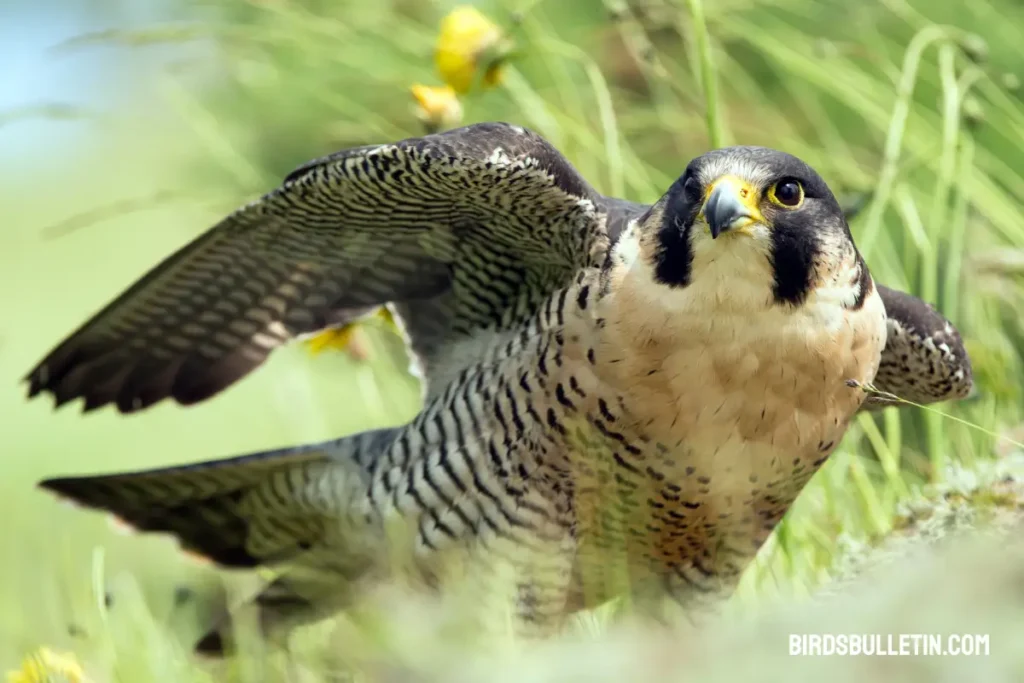
Revered for its speed and hunting skills, the falcon symbolizes both Idaho’s natural beauty and serves as an emblem of conservation success, having rebounded from endangerment in recent decades.
Subspecies Peregrine Falcon
A variety of subspecies within the Falco peregrinus, or Peregrine Falcon, have been identified, with 19 recognized by the 1994 Handbook of the Birds of the World.
Notably, the Barbary falcon found in the Canary Islands and coastal North Africa is considered to comprise two subspecies (pelegrinoides and babylonicus) of Falco peregrinus rather than constituting a separate species, F. pelegrinoides.
The distinction underscores the complexity and diversity within the Peregrine Falcon species. The distribution map below provides an overview of the general ranges of these 19 subspecies, highlighting the global presence of this bird of prey.
Nesting Habits
The nesting habits of Peregrine Falcons (Falco peregrinus) are characterized by their preference for high, cliff-side locations, although they have adapted to urban environments in some regions. Here are key aspects of their nesting behavior:
Nesting Sites: Peregrine falcons are versatile in selecting nesting sites, using both natural cliffs and urban structures. They typically choose high cliff ledges to aid hunting and avoid predators.
Nesting Materials: Peregrine Falcons do not construct elaborate nests. Instead, they create simple scrapes or depressions in gravel, sand, or loose soil on the chosen nesting site.
Breeding Season: The breeding season for Peregrine Falcons varies by region but generally occurs in late winter or early spring. In some areas, it can extend into summer. Courtship displays involve aerial acrobatics, with the male performing impressive flights to attract the female.
Egg-laying and Incubation: Peregrine Falcons typically lay a clutch of 3 to 4 eggs, though the number can vary. Both the male and female participate in incubating the eggs, which lasts for about 29 to 32 days.
Chick Rearing: Once the eggs hatch, both parents are actively involved in caring for and feeding the chicks. Peregrine Falcon chicks are altricial, meaning they are born relatively undeveloped and require parental care.
Fledging: Peregrine Falcon chicks fledge, or leave the nest, approximately 42 to 46 days after hatching. After fledging, the young falcons continue to be dependent on their parents for food and guidance.
Population
Partners in Flight estimates there are approximately 340,000 breeding Peregrine Falcons globally. With a relatively low Continental Concern Score of 9 out of 20, the Peregrine Falcon is currently considered a species of low conservation priority.
Migration
Peregrine falcons demonstrate migratory divides between northern and southern populations. Northern peregrines migrate southward to spend winters away from summer breeding grounds, whereas some southern groups remain in the same areas year-round.
Their extensive journeys can span between continents, such as North and South America. Peregrines also exhibit site fidelity to favored wintering locales, reused annually during migration.
Behavior
The behavior of Peregrine Falcons is marked by a combination of remarkable hunting prowess, territoriality, and adaptation to diverse environments. Here are key aspects of their behavior:
01. Territoriality:
Peregrine Falcons are highly territorial birds, especially during the breeding season. They vigorously defend their nesting sites from other falcons.
02. Hunting Techniques:
- Known for their incredible speed, Peregrine Falcons are adept hunters. Their hunting techniques include high-speed dives, or stoops, to catch prey mid-air.
- They target a variety of prey, including birds such as pigeons, ducks, and songbirds. The stoop involves a rapid descent, and the impact of their sharp talons often stuns or kills the prey.
03. Adaptation to Urban Environments:
Peregrine Falcons exhibit a notable ability to adapt to urban settings. They often nest on tall buildings, bridges, and other structures, taking advantage of the elevated positions that mimic their natural cliff-led habitats.
04. Courtship Displays:
During the breeding season, Peregrine Falcons engage in elaborate courtship displays. These displays involve aerial acrobatics, with the male performing impressive flights to attract the female.
05. Communication:
Peregrine Falcons use vocalizations to communicate. Their calls include sharp, repetitive sounds like “kleeek” or “kek-kek-kek.”
Interhuman Connection
Peregrines offer numerous cultural connections:
- Revered in Aboriginal rock art and myths as swift hunters
- Falconry icon prized since antiquity for hunting prowess
- State raptor symbolizing speed and athleticism
- The subject of films, logos, stamps, and learning programs
- Pest control reducing feral pigeons and rodents
- Tourism draws through urban nest cams and migratory populations
Conservation Status
The banning of DDT and specific reintroduction projects helped peregrine falcon populations significantly recover after declines last century. Ongoing habitat and nest protections allow their status to remain Least Concern.
Legal Protections
In the U.S. the species gained federal protection under the Endangered Species Act from 1970-1999 during recovery efforts.
It currently receives safeguards from the Migratory Bird Treaty Act and Bald Eagle Protection Act alongside state-level species classifications.
Frequently Asked Questions
01. How fast do peregrines dive while hunting?
Peregrines reach astonishing hunting dive speeds over 320 km/hr (200 mph), making them possibly the fastest animal on Earth and earning fame for their incredible velocity.
02. What adaptations help peregrines handle high speeds?
Special nostrils, ear anatomy, eye membranes, and water recovery systems protect sensory organs and physiology during extreme dives. Dense feathers also allow smooth, aerodynamic flight.
03. Why did peregrine falcons decline last century?
Widespread DDT pesticide use concentrated toxins through food chains, severely thinning eggshells and reducing reproductive rates until legal protections banned DDT allowing eventual recovery.
Final Word
Peregrine falcons are supremely athletic hunters, attacking prey with deadly precision and speed enabled by their superior flying ability. Their remarkable hunting skills and extensive migrations connect them to numerous bird species across hemispheres.
Continued conservation efforts focused on protecting peregrine populations can help safeguard their future, as well as the future of their migratory prey.
References
- The Cornell Lab of Ornithology. Peregrine Falcon Life History. https://www.allaboutbirds.org/guide/Peregrine_Falcon
- The Peregrine Fund. Peregrine Falcon Biology. https://peregrinefund.org/explore-raptors-species/Peregrine_Falcon
- Sibley, David Allen. (2014). The Sibley Guide to Birds, 2nd Edition. Alfred A. Knopf, New York.


